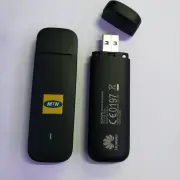Once I, for anonimity purpose, bought a modem on dark market. I was going to use it in Qubes or in some other Linux and warned the seller that modem should work with Linuxes. He assured me that it will, so I bought it. It lay for me for a while until I finally got my hands on it. Before buying a simcard for it I decided to check it first if it will actually work in Qubes. I inserted it in usb port. It appeared in Qubes Devices. Then I attached it to disposible Debian app qube with disabled networking (all my offline qubes are Debian based just like sys-net and sys-firewall). I expected there to appear some modem interface or at least there happens something but it even didn’t appear in file manager. In QDevices it was marked as attached to that qube. So I looked at modem model on its case and googled its manual and it turned out that there even are no Linuxes in its list of compatibility. Only Windows and Mac Oses. Not sure if it actually means that it will really not work with Linuxes but it already looks like a bad sign. Then I used terminal command lsusb in disposible and saw modem’s name there, also checked dev folder in file manager and there was a file that disappeared when I pulled out the modem. So at least OS and qube see it in some way. But what can I do to really make sure that the modem will work with Linux? Or if it will not, can I reflash it somehow to make it work with Qubes or Whonix alone (if use Non-Qubes setup)? I searched some manuals on the topic but they were for cases when modem just doesn’t work and not about cases when you don’t know if it actually compitable with your OS.
So basically I need to find out first if it’s actually compitable with Linux and if:
a) It IS then what should I do to check if it’s actually alive and can work so I can buy simcard for it.
b) It ISN’T then how reflash it to make it work with Linux distros (especially with Qubes-Whonix and Non-Qubes Whonix setups), if this is generally possible.
P.S. Yes, never used modems before so really don’t know how it should behave in the system. Especially in Qubes. ![]()
P.P.S. Modem compatibility list and specifications: Features; Main Features - Huawei E3372 Product Description [Page 8] | ManualsLib
